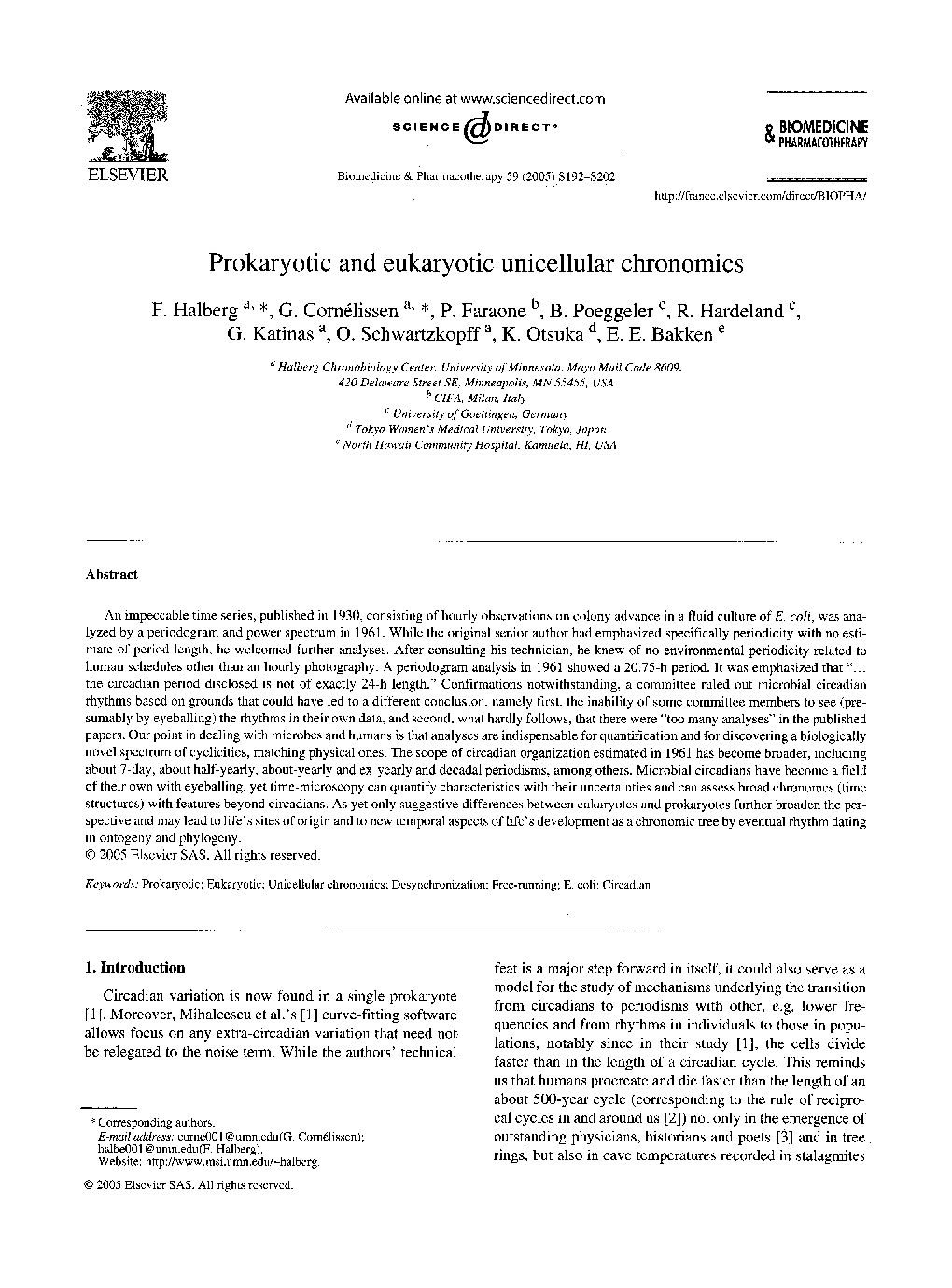| Article ID | Journal | Published Year | Pages | File Type |
|---|---|---|---|---|
| 9004477 | Biomedicine & Pharmacotherapy | 2005 | 11 Pages |
Abstract
An impeccable time series, published in 1930, consisting of hourly observations on colony advance in a fluid culture of E. coli, was analyzed by a periodogram and power spectrum in 1961. While the original senior author had emphasized specifically periodicity with no estimate of period length, he welcomed further analyses. After consulting his technician, he knew of no environmental periodicity related to human schedules other than an hourly photography. A periodogram analysis in 1961 showed a 20.75-h period. It was emphasized that “⦠the circadian period disclosed is not of exactly 24-h length.” Confirmations notwithstanding, a committee ruled out microbial circadian rhythms based on grounds that could have led to a different conclusion, namely first, the inability of some committee members to see (presumably by eyeballing) the rhythms in their own data, and second, what hardly follows, that there were “too many analyses” in the published papers. Our point in dealing with microbes and humans is that analyses are indispensable for quantification and for discovering a biologically novel spectrum of cyclicities, matching physical ones. The scope of circadian organization estimated in 1961 has become broader, including about 7-day, about half-yearly, about-yearly and ex-yearly and decadal periodisms, among others. Microbial circadians have become a field of their own with eyeballing, yet time-microscopy can quantify characteristics with their uncertainties and can assess broad chronomes (time structures) with features beyond circadians. As yet only suggestive differences between eukaryotes and prokaryotes further broaden the perspective and may lead to life's sites of origin and to new temporal aspects of life's development as a chronomic tree by eventual rhythm dating in ontogeny and phylogeny.
Related Topics
Health Sciences
Medicine and Dentistry
Oncology
Authors
F. Halberg, G. Cornélissen, P. Faraone, B. Poeggeler, R. Hardeland, G. Katinas, O. Schwartzkopff, K. Otsuka, E.E. Bakken,
